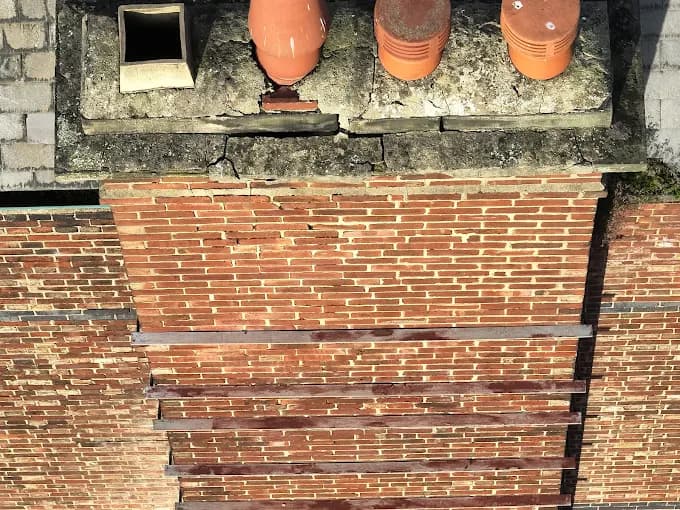
When your home's roof faces the fury of severe storm weather, your roof stands as the first line of defense. Yet you won't always notice the damage immediately after a storm passes.
From loose shingles to compromised flashings, storm damage can create vulnerabilities that threaten your entire house if left unchecked. Understanding how to properly inspect and address storm damage to your roof will help you protect your investment and avoid costly repairs down the line.
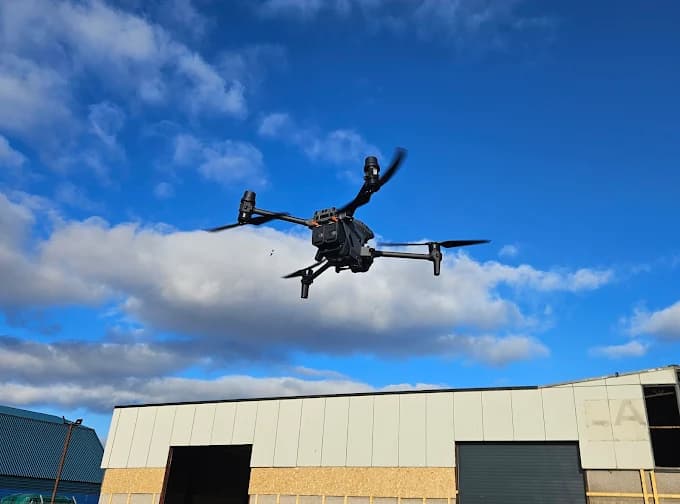
30 Second Summary
- Schedule a roof inspection within 48 hours after severe storms to document damage and prevent further deterioration.
- Look for missing shingles, granules in gutters, water stains, and damaged flashing during the inspection process.
- Document all roof storm damage with photos and detailed notes for insurance claims and contractor estimates.
- Check the attic space for leaks, wet insulation, and compromised structural elements during inspection.
- Prioritize safety by using proper equipment, avoiding wet conditions, and considering drone technology for aerial surveys.
What is a storm damage roof inspection?
When severe weather strikes, a storm damage roof inspection is a thorough assessment of your roof's condition. It's designed to identify any problems caused by wind, hail, rain, or flying debris.
During this inspection, a qualified roofing professional will examine your entire roofing system. This includes shingles, flashing, gutters, and underlying structures.
You'll want to get this inspection done as soon as possible after a storm. This helps to document any damage for insurance purposes and prevent minor issues from becoming major problems.
The inspector will look for signs like missing or damaged shingles, dents from hail impact, and water stains. They also check for compromised seals around vents and structural issues. They'll also check your attic for leaks, proper ventilation, and signs of water infiltration that might not be visible from the outside.
How can a storm impact your roof?
Storms can unleash multiple destructive forces on your roof, making it your home's most vulnerable point during severe weather. High winds can lift and tear off shingles, while flying debris may puncture or crack your roofing materials. Hail can create dimples and bruises that compromise your shingles' protective granules.
Heavy rainfall poses risks of water infiltration, especially if your drainage system becomes clogged with storm debris.
The weight of accumulated snow and ice can stress your roof's structure and create ice dams that force water under shingles. Lightning strikes may cause direct damage or start fires, while fallen tree limbs can crush sections of your roof. Even UV radiation from the sun following a storm can accelerate the deterioration of storm-damaged roofing materials.
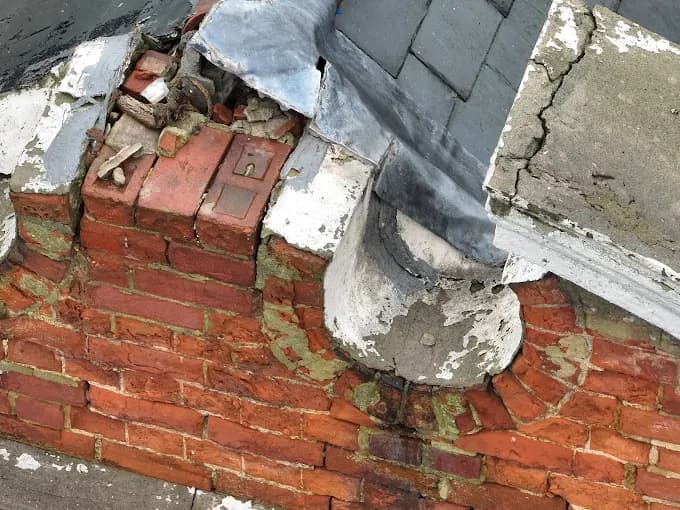
Understanding Different Types of Storm Damage
After a storm, you might see different kinds of problems on your roof. Knowing what to look for can help you identify issues faster.
Wind Damage
High winds can lift the edges of shingles, causing them to bend, crease, or even tear off completely. Look for shingles that are out of place, flapping, or missing. A distinct horizontal crease where the shingle has been lifted is a common sign.
Hail Damage
Hailstones can leave bruises or dents on your shingles, often knocking off the protective granules. Look for dark, circular spots where the granules are gone, or feel for soft, 'bruised' areas on the shingles. Dents on gutters and vents are also a clear indicator of hail.
Water Damage & Debris
Heavy rain can lead to immediate leaks, especially if the storm also clogged your gutters with leaves and other debris. Look for water stains on interior ceilings, damp insulation in the attic, or pools of water around your foundation. Clogged gutters can cause water to back up under the roofline.

What are the early signs of storm damage on a roof?
After experiencing severe weather, look for several telltale indicators of roof damage.
Exterior Signs
On the ground, look for missing shingles or excessive amounts of granules—the sand-like material from your shingles—collecting in gutters and downspouts. Check for visible dents on metal surfaces like flashing and vents.
You should also look for curled, cracked, or buckled shingles, as well as visible holes, dark spots, or sagging areas on your roof's surface.
Interior and Attic Signs
Inside your home, check for water stains on your ceiling or walls, which suggest leaks have already developed. In your attic, look carefully for signs of water infiltration, including wet insulation or damp wooden beams.
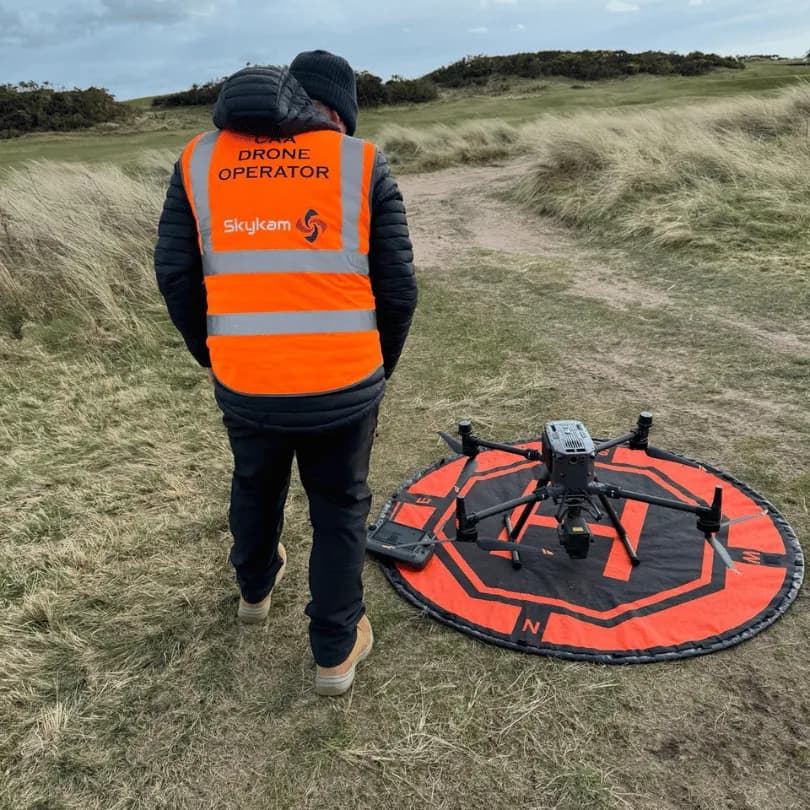
How soon after a storm should you inspect your roof?
Ideally, you should conduct a preliminary roof inspection within 24-48 hours following a severe storm, provided it's safe to do so. Quick action helps you identify urgent repairs and prevent additional damage from developing.
Don't wait for visible leaks to appear inside your home, as water damage can spread silently through your roof structure.
If you can't safely inspect the roof yourself, contact a professional roofer immediately to schedule an assessment. Many roofing companies offer emergency inspection services after major storms.
Remember that insurance claims for storm damage often have time limitations, so prompt inspection and documentation are crucial. Take photos of any visible damage you notice, but avoid walking on wet or damaged sections of the roof.
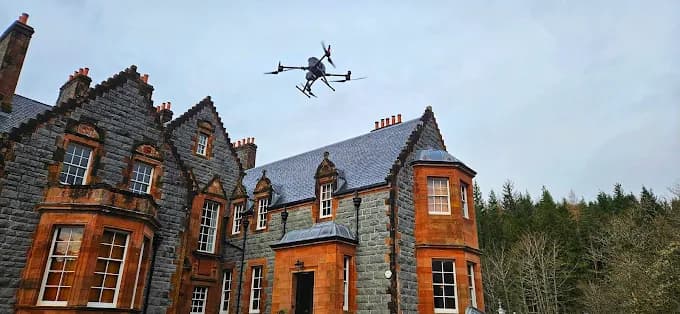
How to safely inspect a roof for storm damage?
When inspecting your roof for storm damage, safety should be your primary concern.
Never climb onto a wet or slippery roof, and always wait until weather conditions are calm and clear. Use a sturdy extension ladder that extends at least three feet above the roof's edge, and ensure it's placed on level ground.
You'll need proper safety equipment, including non-slip shoes, a safety harness, and a hard hat. It's best to have someone spot you from the ground.
If you're not comfortable with heights or lack experience, don't risk your safety - call a professional roofer instead. You can also perform an initial assessment using binoculars from ground level to spot obvious damage.
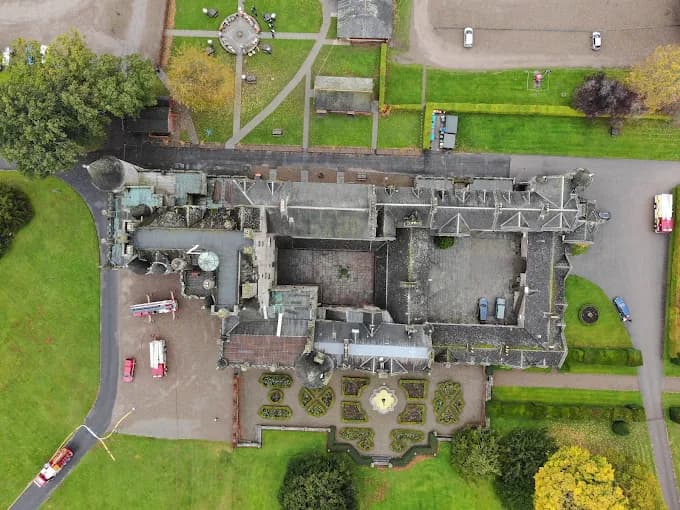
How are drone surveys used in storm damage roof inspections?
Drone technology has revolutionized roof inspections. It eliminates many safety risks associated with physical roof access. You can now capture detailed aerial footage of storm damage without climbing onto dangerous, unstable surfaces.
Modern drones equipped with high-resolution cameras and thermal imaging sensors help detect issues like missing shingles, water penetration, and structural damage. You'll get comprehensive views of hard-to-reach areas and can zoom in on specific damage points for closer examination.
During the survey, a drone pilot can create a digital map of your roof's condition, document all damage with GPS coordinates, and generate detailed reports with precise measurements.
This data helps insurance adjusters assess claims more accurately and allows contractors to plan repairs efficiently. Many drone inspection services now offer real-time streaming, letting you view the inspection as it happens.
What is included in a storm damage roof inspection report?
A comprehensive storm damage roof inspection report breaks down into several key sections. It documents all visible damage and potential issues. You'll find detailed photos and descriptions of damaged shingles, flashing, gutters, and any structural concerns.
The report includes measurements of affected areas and specific locations of damage marked on a roof diagram.
The document will outline the inspector's professional assessment of storm-related versus pre-existing damage, estimated repair costs, and recommended solutions. You'll also see documentation of interior damage signs like water stains or leaks.
The report contains important insurance-related details (such as date of damage and weather conditions) and whether the damage requires immediate attention. A materials list and repair timeline typically complete the evaluation.
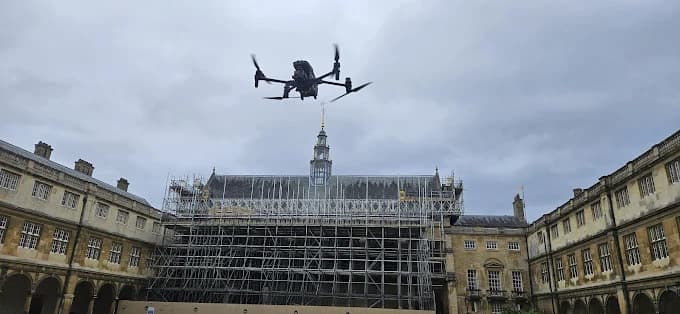
Can a storm damage roof report be used for insurance claims?
Yes, professional storm damage roof inspection reports serve as valuable documentation for insurance claims. They provide detailed evidence of storm-related damage, helping validate your claim with your insurance company.
Most insurers require thorough documentation before approving repairs or replacement.
Your inspection report will include photos, measurements, and expert assessment of the damage, which can strengthen your case significantly. You'll want to submit the report promptly to your insurance provider.
Make sure the inspector you hire is certified and experienced, as insurance companies may scrutinize reports from unqualified sources. It's also helpful if your inspector has experience working with insurance adjusters.
How much does a storm damage roof inspection cost in the UK?
Most storm damage roof inspections in the UK cost between £100 to £250, though prices can vary based on your property's size and location. You'll typically pay more if you live in London or other major cities, where rates can reach up to £350 per inspection.
Some roofing companies offer free initial assessments, but these are usually brief visual inspections from ground level. For a comprehensive inspection that includes a drone survey or physical roof access, you'll need to pay the full fee.
If you're planning to make an insurance claim, it's worth investing in a detailed inspection with a written report, which might cost an additional £50-£100. Many companies will deduct the inspection cost from your repair bill if you choose them for the work.
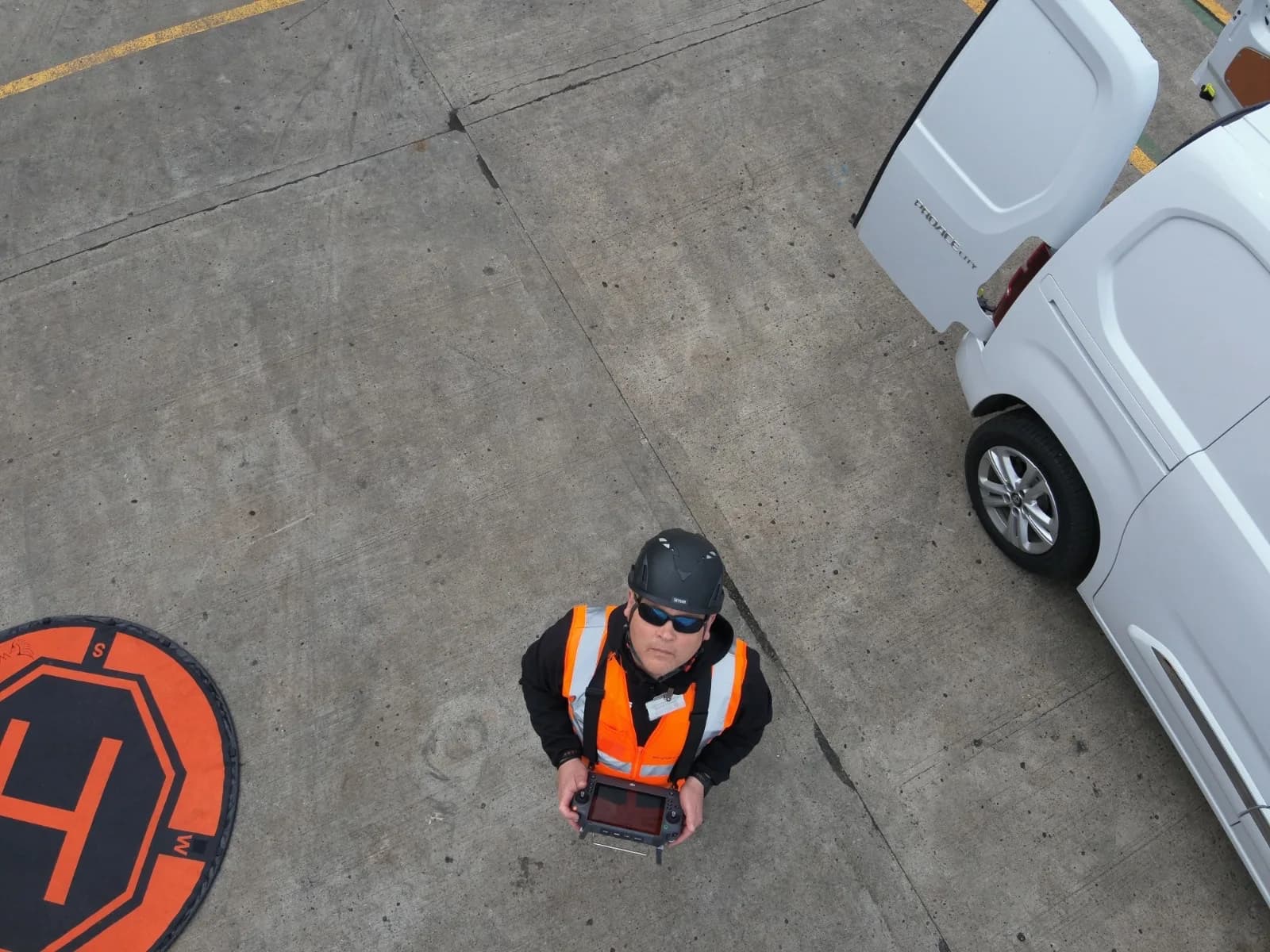
What to do after receiving a storm damage roof report?
After receiving your storm damage roof report, take these three essential steps:
Review the Findings: Read the report carefully and ask your inspector to clarify any technical terms or recommendations you don't understand. Make sure you have a clear picture of what needs immediate attention versus what can wait.
Contact Your Insurance Company: Promptly submit the inspection report along with photos and detailed documentation of the damage. Your insurer will likely send an adjuster to assess the damage and determine coverage under your policy.
Get Contractor Quotes: Obtain quotes from at least three qualified roofing contractors for the necessary repairs. Compare these estimates with your insurance coverage and choose a contractor who's licensed, insured, and experienced in storm damage repairs. Don't delay addressing critical repairs.
How can you prevent future storm damage to your roof?
While no roof is completely storm-proof, regular maintenance and preventive measures can significantly reduce your risk of storm damage.
Routine Maintenance
Trim overhanging tree branches that could fall on your roof during storms.
Keep your gutters clean and properly secured to prevent water backup and ice dams.
Replace missing or damaged shingles promptly.
Ensure all flashing is securely fastened.
Schedule professional inspections twice a year to catch potential issues before storms hit.
Proactive Upgrades
You can also reinforce your roof's weak points. Install hurricane straps to strengthen the connection between your roof and walls.
Consider upgrading to impact-resistant shingles that can withstand hail and high winds. Don't forget to check your attic ventilation and insulation—proper airflow helps prevent moisture buildup.
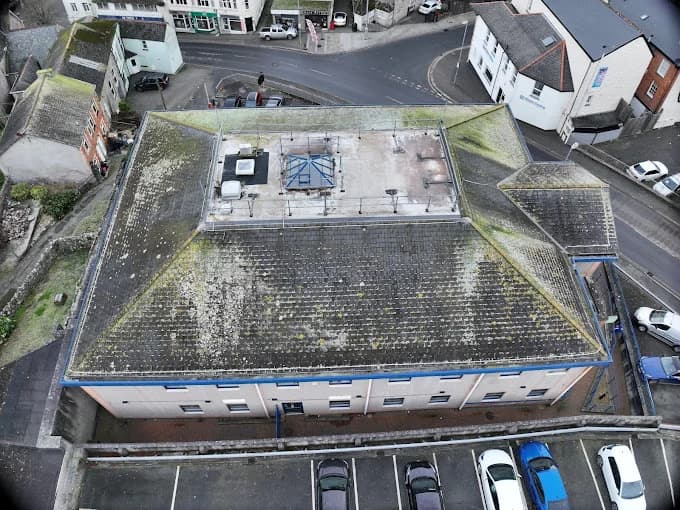
Who should you contact for a professional storm damage roof inspection?
When your roof sustains storm damage, you should contact a licensed and insured roofing contractor who specializes in storm damage assessment. Look for contractors with certifications from major roofing manufacturers and positive reviews. You'll want someone who's experienced in working with insurance companies and filing claims.
Don't hire 'storm chasers' who show up at your door after severe weather.
Instead, research local roofing companies with permanent business addresses and established reputations. Check their credentials through trade bodies like the National Federation of Roofing Contractors (NFRC) or trusted online directories.
Contact at least three qualified contractors for estimates, and make sure they provide detailed written proposals.
Secure Your Post Storm Damage Roof with a Professional Drone Roof Inspection
After a storm, acting quickly with a safe and thorough drone roof inspection is crucial to protecting your property and securing a successful insurance claim. The challenge lies in obtaining detailed evidence from potentially hazardous areas without risking personal safety or further damage.
HireDronePilot directly solves this problem. Our network includes specialist drone pilots with the experience and GVC certifications required to conduct detailed aerial surveys of storm-damaged roofs, providing the high-quality evidence you need for insurance purposes.
As the UK's premier managed marketplace, we are experts at connecting businesses with verified professional drone pilots for hire. We streamline drone services through competitive bidding, ensuring quality, compliance, and value for every aerial project across the United Kingdom.
For a fast, safe, and comprehensive assessment of your roof, explore our network of professionals at https://hiredronepilot.uk/.
Don't wait for a small leak to become a major disaster—book a certified storm damage roof inspection today.
About the Author

Written by
Peter Leslie
Peter Leslie is a CAA-approved commercial drone pilot with 10+ years experience and over 10,000 flight hours. He holds the GVC and A2 CofC drone licences with full CAA Operational Authorisation. Peter is a member of ARPAS-UK, the UK's non-profit trade association for the drone industry. He founded HireDronePilot to connect UK businesses with qualified, insured drone operators.
Looking for More Drone Work?
Join the UK's leading network of professional drone pilots and grow your business.
Open Access
Bid on any job - all jobs open to all pilots
Grow Revenue
Access high-value commercial projects
Stay Busy
Fill your schedule with regular work
Related Articles

Our Drone Survey Service In Stirling, Scotland
Bringing you Stirling drone survey data from areas no one else can fly.

How Much Does A Drone LiDAR Survey Cost
Forecasting your drone LiDAR survey cost requires understanding what's hidden beyond the initial quote.

Step By Step Process Of Drone LiDAR Survey
Next, discover the crucial post-flight steps that determine your survey's success.
